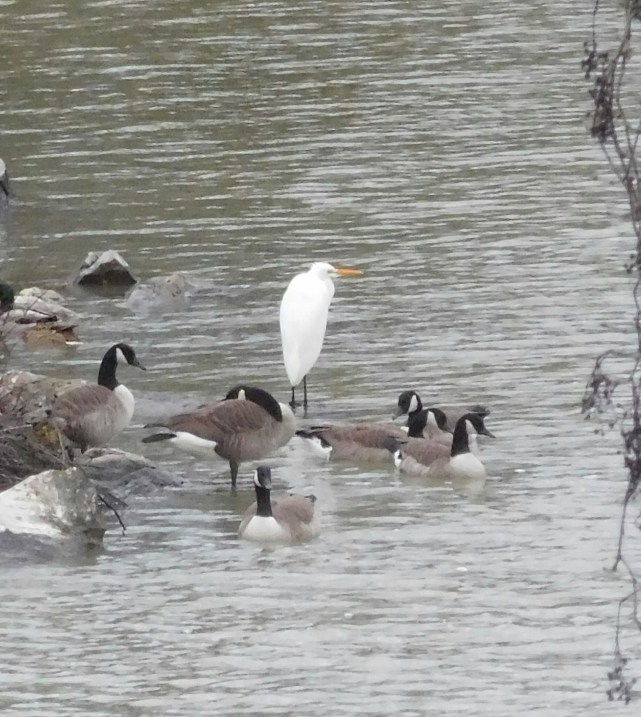
Photo by Dewey Fuller • A great egret stands amid a flock of Canada geese at Middlebrook Lake in Bristol, Tennessee.
It’s 2020, but I feel like I am still playing catchup with the birds found in the last few weeks of 2019. We might not have had much snow so far this winter, but birds with white plumage have stirred up some excitement in recent weeks. The birds are finally showing some winter movement as they turn up in some unlikely places and at unseasonable times. While I have felt that the winter’s off to a slow start in regards to birds, some other unusual visitors have popped up in various locations in the region.
Dewey Fuller, who resides near Middlebrook Lake in Bristol, Tennessee, emailed me recently to report an unexpected bird and share photos of the feathered visitor.
He correctly identified the bird as a great egret based on its white plumage and dark legs. “Another unusual visitor to Middlebrook,” Dewey wrote in his email.
The waders — herons, egrets, storks — usually reside in wetlands and coastal areas, but they are prone to wander after the nesting season. Their wandering usually takes place in late summer and early fall, so the Middlebrook visitor was a tad out of season.
While it is unusual for a great egret to visit the region in December, I know from personal experience that a twelfth month visit from this graceful wading bird is not unheard of. The first great egret to ever visit my home arrived on a snowy evening in December many years ago. This past summer heralded a more seasonal visit from only the second great egret to visit my home.
Joe McGuiness, an employee with the U.S. Forest Service who resides in Erwin, recently observed a great egret at a pond along the linear walking trail in Erwin, Tennessee. I’m not sure why these stately white birds have been present in December, but they certainly attracted attention with their unexpected presences.
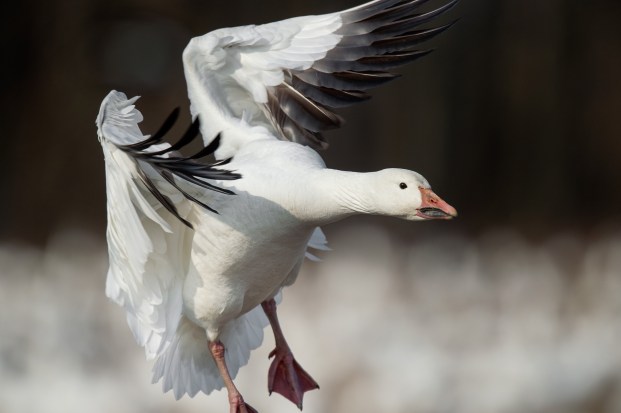
Photo by StockSnap/Pixabay.com • A snow goose comes in for a landing, showing off its black flight feathers that contrast with its otherwise all-white plumage.
The egret was only one recent mostly all-white bird to put in an appearance. I found a single snow goose in a cornfield along Old Johnson City Highway about a half mile from the Lynch Farmhouse/Gallery in Unicoi, Tennessee shortly before Thanksgiving.
Snow geese are extremely abundant, but their migratory flyways usually keep these geese far from the mountains and valleys of Northeast Tennessee.
The snow goose has a second color phase known as a “blue goose” that has plumage that replaces the white feathers of the snow goose except in the head, neck and tip of the tail. The white phase of the species boasts all-white plumage except for black flight feathers. Adults have pinkish-red legs and bills. Serrations along the bill create the diagnostic “grin patch” that helps people distinguish the goose from the smaller related Ross’s goose. Male snow geese are typically somewhat larger than females.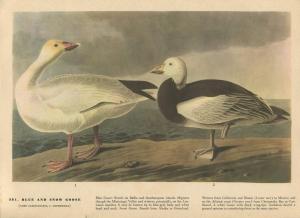
Snow geese breed well north of the timberline in Canada, Alaska, Greenland and Siberia. In winter, they head south to spend the colder months across much of the United States and even Mexico.
Snow geese numbers have exploded in the late 20th and early 21st centuries. In fact, some experts worry that the sheer abundance of this goose is doing damage to the fragile tundra habitat these geese use for breeding. According to the website “All About Birds,” hunting for snow geese in the eastern United States was stopped in 1916 because of low population levels. Hunting was allowed again in 1975 after populations had recovered.
Although they remain a hunted game bird, an occasional snow goose achieves significant longevity in the wild. The oldest snow goose was an individual documented as being 27 years and six months old that was shot in Texas in 1999.

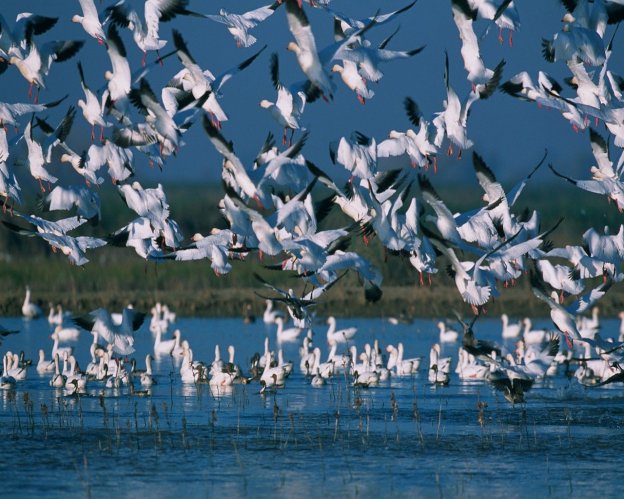
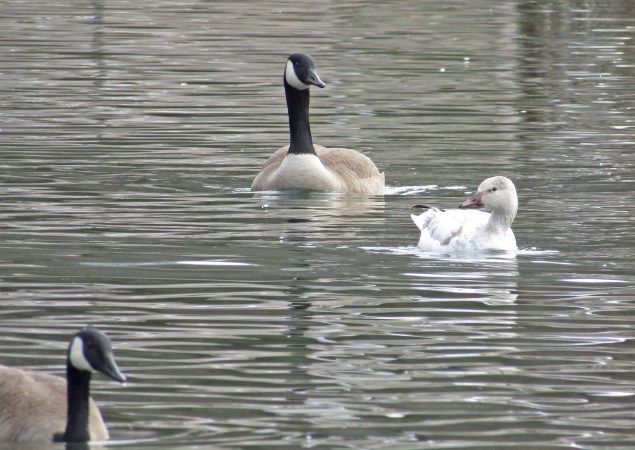
Reblogged this on Wolf's Birding and Bonsai Blog.
LikeLike